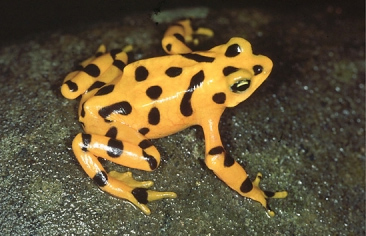
Atelopus zeteki. Panama's iconic Golden Frog, on the brink of extinction, is the focus of the Amphibian Conservation Center's captive breeding program in El Valle, Panama. Photo credit: Marcos Guerra.
|
[an error occurred while processing this directive] |
 Atelopus zeteki. Panama's iconic Golden Frog, on the brink of extinction, is the focus of the Amphibian Conservation Center's captive breeding program in El Valle, Panama. Photo credit: Marcos Guerra. |